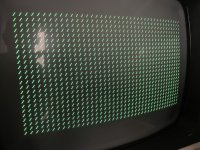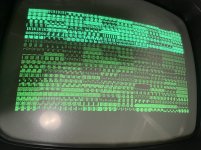Port89
Experienced Member
I’m replying away from the machine but I know what these are:First of all, check the HDRIVE and VDRIVE signals.
VDRIVE should be either 50 Hz or 60 Hz (depending upon the configuration of the EDIT ROM programming). The EDIT ROM part number will tell us...
HDRIVE should be something between 15 kHz and 20 kHz. I can't remember exactly what at the moment without looking it up.
Then check the VIDEO signal to see what you have - either stuck HI or LO, or activity.
Dave
Vdrive is very close to 50Hz
H drive is very close to 20Khz
Video looks like activity - that is what I was measuring when C57 burned out on me yesterday
I’ll post photos of the video tomorrow.
Last edited:


